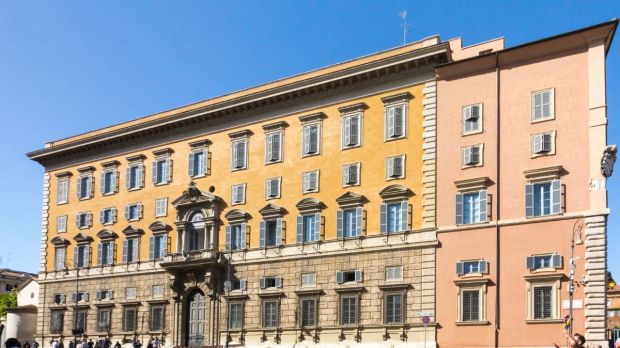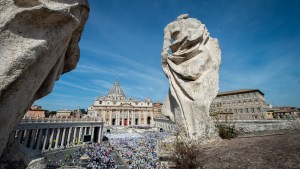Although its first headquarters was located in via di Ripetta, near the current Piazza del Popolo, the Dicastery for the Doctrine of the Faith is now located within the Leonine walls. On the first floor and in the basement are its precious archives, containing manuscripts the oldest of which dates back to 1542. The archives have been open to researchers since 1998 at the request of Cardinal Joseph Ratzinger, prefect of the dicastery from 1981 to 2005, whose portrait is prominently displayed in one of the bookcases.
On the upper floors, there are offices where about 30 employees work, “minutantes” in charge of processing the files under the direction of the superiors – including the current prefect, Cardinal Luis Ladaria Ferrer. The chapel is dedicated to Pius V (1504-1572), grand inquisitor of the Roman Inquisition (predecessor of the prefects), who was elected pope in 1566. The Dominican friar, keeping his white cassock, introduced the current papal vestment color. On the roof of the building there is a panoramic terrace with a view of Bernini’s colonnades embracing St. Peter’s Square.
Formerly the Holy Office, the DDF has a special status: as a promoter of justice, it acts as a tribunal – judging, among other things, cases of abuse committed by members of the clergy, dissolution of the matrimonial bond under certain conditions, and heresies – and the documents it produces belong to the magisterium of the Church. In the new constitution of the Roman Curia (2022), however, Pope Francis has put it on an equal footing with the other dicasteries, causing it to lose some of its prestige.
The dicastery is made up of several entities, starting with some 30 members appointed by the pope who meet once a month on Wednesdays and make decisions on matters at hand, which are then submitted to the pontiff. These members also meet in plenary session every two years, with the next meeting scheduled for January 2024.
At another level are the consultors, also papally appointed. They are professors, researchers, and academics, about 30 in number, who meet every two weeks on Mondays (in consulta), in plenary or partial form depending on the subject. Finally, the “officials” – employees – meet on Fridays (en congresso) with the superiors, to whom they submit specific questions.
The DDF, which has changed its structure over the course of its centuries-long history, has two sections: a “disciplinary” section with about 20 people and a “doctrinal” section with about 10 people. The former matrimonial section has become an office whose competences have been absorbed by the doctrinal section.
The small staff of about 30 people has been confronted in recent years with great challenges. The abuse crisis is one of them; the DDF receives more than 1,000 denunciations per year, that is to say an average of 60 new cases per official. However, they have also been called upon to deal with the German Synodal Way, and the controversial initiatives of bishops’ conferences such as the recent blessing of same-sex couples initiated by the Flemish Belgian bishops.


